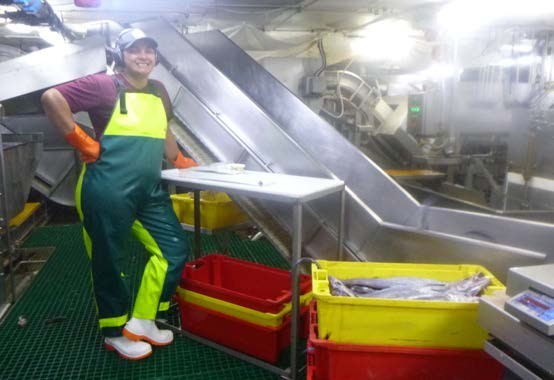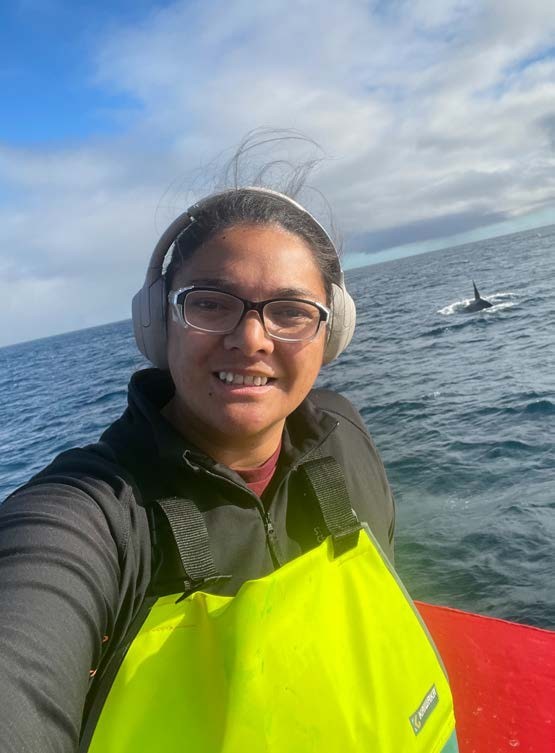Science and seasickness:
LIFE AS A FISHERIES OBSERVER

Fisheries observers gather lots of catch data, such as length, sex, age, and indications of recent spawning. In some highly migratory species like bluefin tuna, they also take note of the stomach contents of fish, which can provide insights into their recent movements.
Elizabeth Malama went into commercial fishing at 17 and grew to love the lifestyle and being out at sea.
“Seascapes can be exceptionally beautiful. It’s a real privilege I get to admire it and call it work. You get beautiful sunny, flat, calm days, seeing dolphins and sea lions in the environment, to the gnarly rough days when Mother Nature reminds you how small and insignificant you are.”
After 10 years as a commercial fisher, she felt like she had outgrown her role and saw becoming a fisheries observer as a way to give back to the industry, and the environment, while still being able to go to sea.
As a fisheries observer, a role that Elizabeth has been doing for the past four years, a day at sea normally involves keeping tabs on the presence of seabirds and marine mammals, the amount of fish being caught, and how non-fish species interact with the vessel. She also checks that the vessel’s protected species management plan is being followed, and takes note of weather impacts, or other external factors, on fishing activity.
As well as all that, there’s always plenty of catch data gathering to be done, such as length, sex, age, and indications of recent spawning. In some highly migratory species like bluefin tuna, Elizabeth also takes note of the stomach contents of fish, which can provide insights into their recent movements.
“We also collect fish otoliths, or ear bones, which are used to age fish by counting small rings found in the bones. It’s much like the way trees can be aged using the rings inside a trunk.”
All this data is passed back to fisheries scientists onshore, who use it to assess stock status for fisheries and inform sustainability decisions.
While she loves being at sea, Elizabeth hasn’t been able to overcome one major challenge – she still gets seasick.
“Every other challenge I’ve had with the job has brought growth and understanding, but getting seasick for 14 years has been the one thing that hasn’t gotten better. It’s funny, I’m descended from ancient voyagers, but I still get seasick.”
For Elizabeth, interpersonal skills are some of the most important tools for a fisheries observer to succeed in their job.
“I like meeting and getting to know new people, I’ve learned it’s vital to get along when you’re in an isolated environment in close quarters. As an observer I’m coming into a place that’s the fishers’ second home, so it’s important to understand they are sharing their home with me. Pulling your weight in domestic tasks is important; if you’re staying at someone’s house you don’t treat it like a hotel.”

After 10 years as a commercial fisher, Elizabeth Malama felt like she had outgrown her role and saw becoming a fisheries observer as a way to give back to the industry, and the environment, while still being able to go to sea.

When at sea and not on shift, Elizabeth has time to read, finishing 10 books in one threeweek voyage.
Elizabeth reckons a few of the important qualities in a fisheries observer are being okay with being away from home for long periods, being able to work independently, and having a great sense of humour.
While recently on shore, Elizabeth worked in a fixed-term role as a team leader to expand her knowledge on what goes into supporting fisheries observers, and how data that observers collect is used. She is looking forward to heading out on her next stint at sea as an observer.